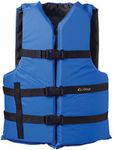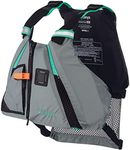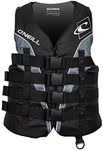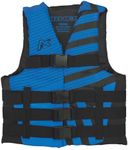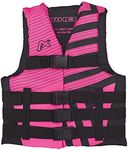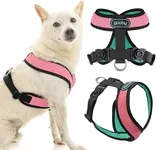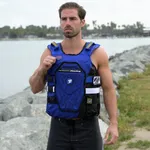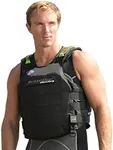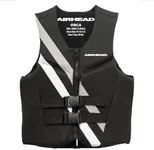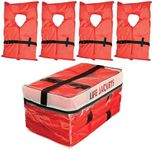Buying Guide for the Best Adult Life Jackets
Choosing the right life jacket is crucial for safety when engaging in water activities. A well-fitted life jacket can save your life by keeping you afloat and reducing the risk of drowning. When selecting a life jacket, consider the type of water activity, the environment, and your personal comfort. Here are some key specifications to help you make an informed decision.TypeLife jackets come in different types, each designed for specific activities and environments. Type I is for offshore use and provides the most buoyancy, suitable for rough or remote waters where rescue may be delayed. Type II is for nearshore use, ideal for calm, inland waters where quick rescue is likely. Type III is for flotation aids, best for general boating or specialized activities like kayaking, where comfort and freedom of movement are important. Type IV is a throwable device, not worn but kept on board for emergencies. Type V is for special use, designed for specific activities like windsurfing or kayaking. Choose the type that matches your activity and environment.
BuoyancyBuoyancy is the force that keeps you afloat in the water. It is measured in pounds and indicates how much weight the life jacket can support. Higher buoyancy is needed for rough waters or if you are carrying extra gear. For calm waters and lighter activities, lower buoyancy may be sufficient. Ensure the life jacket provides enough buoyancy to keep your head above water comfortably.
Fit and SizeA proper fit is essential for a life jacket to work effectively. Life jackets come in various sizes, often based on chest measurements and weight. It should fit snugly without being too tight or too loose. Adjustable straps can help achieve a better fit. Try on the life jacket and move around to ensure it stays in place and does not ride up. Comfort is key, as you are more likely to wear it consistently if it feels good.
MaterialLife jackets are made from different materials, each offering varying levels of durability and comfort. Nylon is lightweight and less expensive, suitable for occasional use. Neoprene is more comfortable and provides better insulation, ideal for extended wear and colder conditions. Consider the material based on how often you will use the life jacket and the conditions you will be in.
VisibilityVisibility is important for rescue situations. Bright colors like orange, yellow, or red make it easier for rescuers to spot you in the water. Some life jackets also have reflective strips to enhance visibility in low light conditions. Choose a life jacket with high visibility features to increase your chances of being seen quickly.
Additional FeaturesSome life jackets come with extra features that can enhance safety and convenience. These may include pockets for storing small items, D-rings for attaching gear, or a whistle for signaling. Consider what additional features might be useful for your specific activities and choose a life jacket that includes them.
